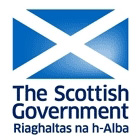Scottish National Dictionary (1700–)
Hide Quotations Hide Etymology
About this entry:
First published 1965 (SND Vol. VI).
This entry has not been updated since then but may contain minor corrections and revisions.
Quotation dates: 1808-1845, 1904
[0,0,0,0,0,0,0,0,0,0,1,1,1,1,1,0,0,0,0,0,1,0,0,0,0,0,0,0,0,0]
LASH, n.2, v.
I. n. A looped string fastened so as to raise simultaneously groups of warp-threads in a loom, a Leash. Also in n.Eng. textile usage.Sc. 1808 J. Duncan Weaving 164:
Another set of cords called lashes, connecting the simples with the cord, upon both of which the lashes slide easily up and down. The application of the lashes to the simples must be regulated by the pattern to be produced.m.Lth. 1812 P. Forbes Poems 20:
Pack thread, penny cord an' lashes.wm.Sc. 1842 Children in Trades Report ii. i 32:
The pattern so drawn is sent to the "flower-lasher," to be arranged for the loom … As each yellow square is seen he twines a string, called a "lash" behind each thread in the simple.
II. v. To fasten lashes in a loom. Hence lasher, one who does this. Commonly in Paisley shawl weaving.Rnf. 1825 Gaberlunzie 91:
I … carried it to Gibbie Kinch, my lasher.Rnf. 1845 Stat. Acc.2 VII. 273:
He had, in his capacity as a damask weaver, invented the most approved method of flower lashing. … Formerly one man was employed to read the flower; a second to take it down; and a third to lash it on. Now all these operations are done by one and at once.Rnf. 1904 M. Blair Paisley Shawl 36:
The lasher had at his left hand a bobbin of strong cotton thread, and running his eye from left to right, if claret covers two squares, he interlaces the cotton thread behind the corresponding threads of the simple, and so on across the face of the design. This is now knotted up and called a "lash." The next colour, green, is treated in like manner, and so on, till all the colours are gone over, and when completed they form a "bridle." Each lash represented one colour, and each bridle the whole of the colours in one line of weft.
You may wish to vary the format shown below depending on the citation style used.
"Lash n.2, v.". Dictionary of the Scots Language. 2004. Scottish Language Dictionaries Ltd. Accessed 17 Dec 2025 <http://www.dsl.ac.uk/entry/snd/lash_n2_v>


